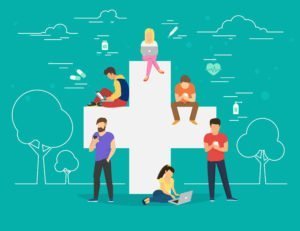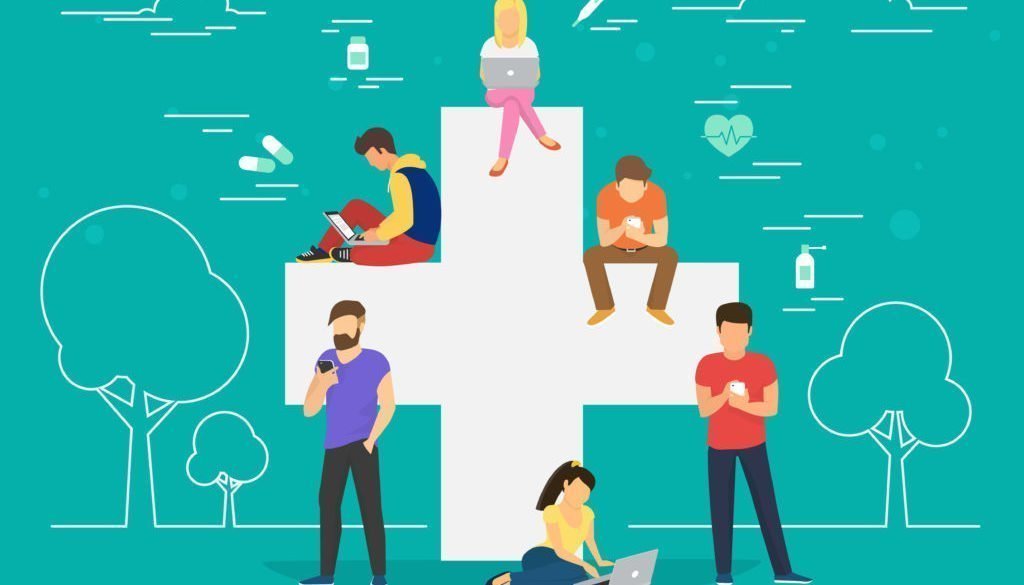E-Mental Health: Benefits, Limitations, and The Future
Mia DeFinoMental health is a recognized population health issue, but we still face inequality in treatment access
Depression, anxiety, and combinations of these two mental health disorders are prevalent around the world. According to the CDC and WHO, unipolar depression was the third leading cause of disease burden in the world in 2004. In the United States, $193.2 billion dollars in earnings are lost by people with serious mental illness. In many countries, there are too few trained professionals to accommodate the number of people who need access to counseling and psychotherapy services. In the United States only 44.20% of the need for professional mental health treatment is met.
Unmet need for mental health services is not equally distributed. People living in rural areas face different barriers in accessing care than those in urban areas do. There are racial/ethnic differences in willingness to access care because of variations in the stigma around having a mental health issue: Hispanic Americans and African Americans each use mental health services at one half the rate of whites. There are other barriers to access, such as time constraints (i.e., patients may not have the time available when offices are typically open for care), inability to afford therapy, lack of access to health care providers (no referral/recognition of mental health issue), or a lack of available clinics/therapists in surrounding area. Both because of the disparate impacts caused by the barriers to access treatment, and because of the economic costs of mental illness (in terms of treatment and lost wages), mental illness has been identified as a major population health issue by the CDC, Healthy People 2020, and WHO.
What are eMH and TP?
Fortunately, with the rise of telemedicine, digital technologies, and mobile phones, there are new ways to get more people with mental illness the treatment they need. E-Mental Health (eMH) treatment and telepsychiatry (TP) are expanding the ways to treat people with mental illness, and these approaches could have impacts on population health and health disparities.
Today, eMH refers to mental health services provided through the internet and related technology (including apps for smartphones), and TP refers to mental health services provided through HIPAA-compliant video conferencing from a location convenient for the patient, according to Hilty et al. In 2014, use of telemental health services increased in rural areas and was used frequently in states that provided Medicare coverage for TP, suggesting that increased access to treatment helps patients use it. Telepsychiatry has been found to be as efficacious as in-person therapy and is being incorporated into numerous settings; there are currently 32 states that mandate that private insurance cover telemedicine.
Both India and Asia have started thinking about how to incorporate eMH into their national health systems to reach the vast populations in rural areas or those in large cities who do not have access to appropriate mental health care. Also, the UK National Health Service has created a list of recommended eMH apps for patients to use. Australia’s The Black Dog Institute provides training for physicians on eMH and how to evaluate apps, as well as on matching what treatment is appropriate for which patients.
Benefits and limits of eMH
The cost of mental health treatment in the United States was $201 billion in 2013, making mental health one of the costliest health conditions to treat. Many startups have emerged in recent years with goals to reduce the cost of mental health treatment and the burden of mental illness. Current eMH services can be categorized into four main areas: providing information; screening, assessing, and monitoring; intervention; and providing social support (Hilty et al., 2017). The benefits of eMH are several: patients can easily access an app or a website through their phone and take it with them wherever they go, apps can be accessed at any time of the day for immediate support, apps can use social media and gaming to encourage the patient to adhere to treatment, and sensors already built into the phone may be able to incorporate environment-specific cues and appropriate responses.
Although eMH can benefit patients, providers, and society, there are still questions and concerns. For example, how does eMH treatment compare to traditional treatment in terms of effectiveness? What are the privacy issues around implementation? How do outcomes compare with other methods? Some apps transmit patients’ identifying information–raising a huge red flag, because this could lead to information being accessed by unintended parties. Also, with hundreds of apps available to download, it is hard to know which apps are beneficial and which apps are ineffective.
The cost of accessing therapy through the app can cause issues for some patients, depending on their financial and  insurance situation. Some eMH startups that do not help patients file for insurance reimbursement or payment for the treatment sessions, and some programs require patients to pay for services through subscriptions, such as Kip, Talkspace, and Lantern. This type of approach does not help some of the major population groups with high need and high risk, as these groups tend to have lower incomes and are unlikely to be able to afford subscription-based treatment. Other companies do try to work with insurance for reimbursement and are aiming to be affordable to a broader range of clients, such as Ginger.io and LARKR. Other options in development include options for employers to add these apps to employee wellness programs, reducing the cost for users.
insurance situation. Some eMH startups that do not help patients file for insurance reimbursement or payment for the treatment sessions, and some programs require patients to pay for services through subscriptions, such as Kip, Talkspace, and Lantern. This type of approach does not help some of the major population groups with high need and high risk, as these groups tend to have lower incomes and are unlikely to be able to afford subscription-based treatment. Other companies do try to work with insurance for reimbursement and are aiming to be affordable to a broader range of clients, such as Ginger.io and LARKR. Other options in development include options for employers to add these apps to employee wellness programs, reducing the cost for users.
One major limitation of eMH is the lack of evidence for the effectiveness of eMH apps compared with traditional in-person therapy. Many providers will hesitate to refer their patients to an app without evidence to support its efficacy. Studies have shown the promise of eMH apps, but more standards are needed to verify the presence of features effective in treating a given mental illness. New clinical trials are underway, and regulatory agencies have developed some initial policies about when an eMH app needs to be reviewed as a medical device.
Will eMH be enough in the future?
While these new eMH technologies are exciting, technological solutions may not always be a possibility, and may not be necessary. The Friendship bench project, for example, has been effective in addressing mental illness in Zimbabwe via a community-based effort to help locals recognize symptoms of mental illness, obtain a referral, and talk with a community counselor while improving the quality of life for the individuals seeking treatment. This community-based approach is being expanded and tested in other locations in sub-saharan Africa.
The future of mental health treatment in the United States and globally will most likely require a combination of community-based and technology-based approaches, and best practices will depend on the availability of resources and context in a particular country.






All comments will be reviewed and posted if substantive and of general interest to IAPHS readers.